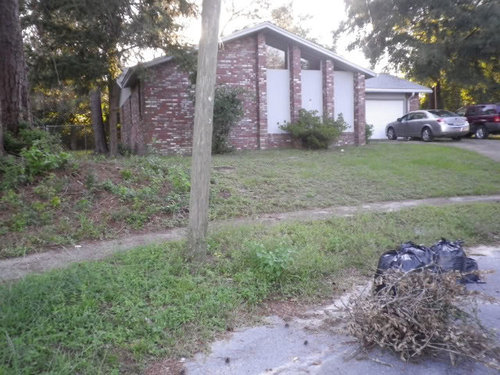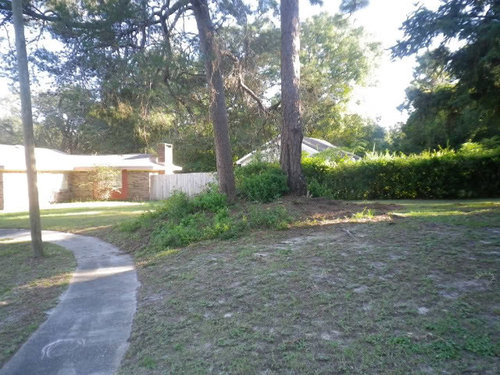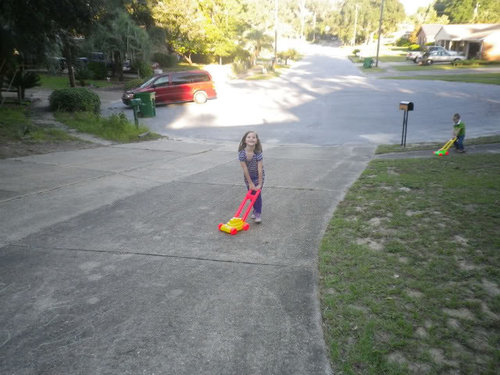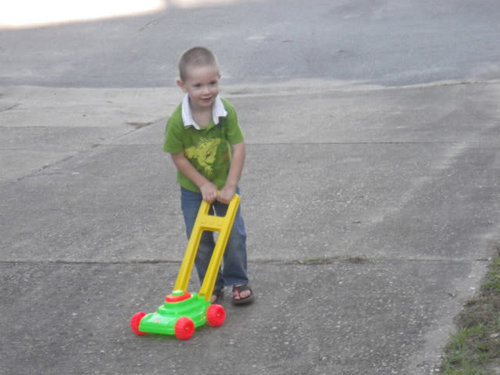My organic lawn progress
A3M0N
12 years ago
Related Stories

FRONT YARD IDEASBefore and After: Front Lawn to Prairie Garden
How they did it: Homeowners create a plan, stick to it and keep the neighbors (and wildlife) in mind
Full Story
BEFORE AND AFTERSSee 6 Yards Transformed by Losing Their Lawns
Wondering whether a turf lawn is the best use of your outdoor space? These homeowners did, and they found creative alternatives
Full Story
LANDSCAPE DESIGNGet Along With Less Lawn — Ideas to Save Water and Effort
Ditch the mower and lower your water bill while creating a feast for the eyes with diverse plantings and gathering places
Full Story
EARTH DAYThe Case for Losing the Traditional Lawn
Work less, help the environment and foster connections by just saying no to typical turf
Full Story
GROUND COVERSGive Your Lawn a Taste of the Wild
Consider the joys of an irregularly trimmed meadow lawn: It’s ecofriendly, visually interesting and still good for romping
Full Story
SAVING WATERHouzz Call: Are You Letting Go of Your Lawn?
Many facing a drought are swapping turf for less thirsty plantings. If you’re one of them, we’d like to hear about it
Full Story
DECORATING GUIDESDream Living Room Makeover Progress Report
See how our sweepstakes winner is handling life in a construction zone — and get a peek at the remodel's progress
Full Story
GARDENING GUIDESHow to Switch to an Organic Landscape Plan
Ditch the chemicals for a naturally beautiful lawn and garden, using living fertilizers and other nontoxic treatments
Full Story
LANDSCAPE DESIGN15 Great Ideas for a Lawn-Free Yard
End the turf war for good with hardscaping, native grasses and ground covers that save water and are easier to maintain
Full Story
GREAT HOME PROJECTSHow to Replace Your Lawn With a Garden
New project for a new year: Lose the turfgrass for energy savings, wildlife friendliness and lower maintenance
Full StorySponsored











Kimmsr
A3M0NOriginal Author
Related Professionals
Danbury Landscape Architects & Landscape Designers · Edmond Landscape Architects & Landscape Designers · Hershey Landscape Architects & Landscape Designers · Brooklyn Center Landscape Architects & Landscape Designers · Gainesville Landscape Contractors · Crystal Landscape Contractors · New Brighton Landscape Contractors · Pueblo West Landscape Contractors · Washington Landscape Contractors · Quartz Hill Landscape Contractors · Gurnee Driveway Installation & Maintenance · Bakersfield Swimming Pool Builders · College Station Swimming Pool Builders · Bellmawr Fence Contractors · Georgetown Fence Contractorsdogwind
A3M0NOriginal Author
dchall_san_antonio
A3M0NOriginal Author
dchall_san_antonio
A3M0NOriginal Author
dchall_san_antonio
A3M0NOriginal Author
dogwind
A3M0NOriginal Author